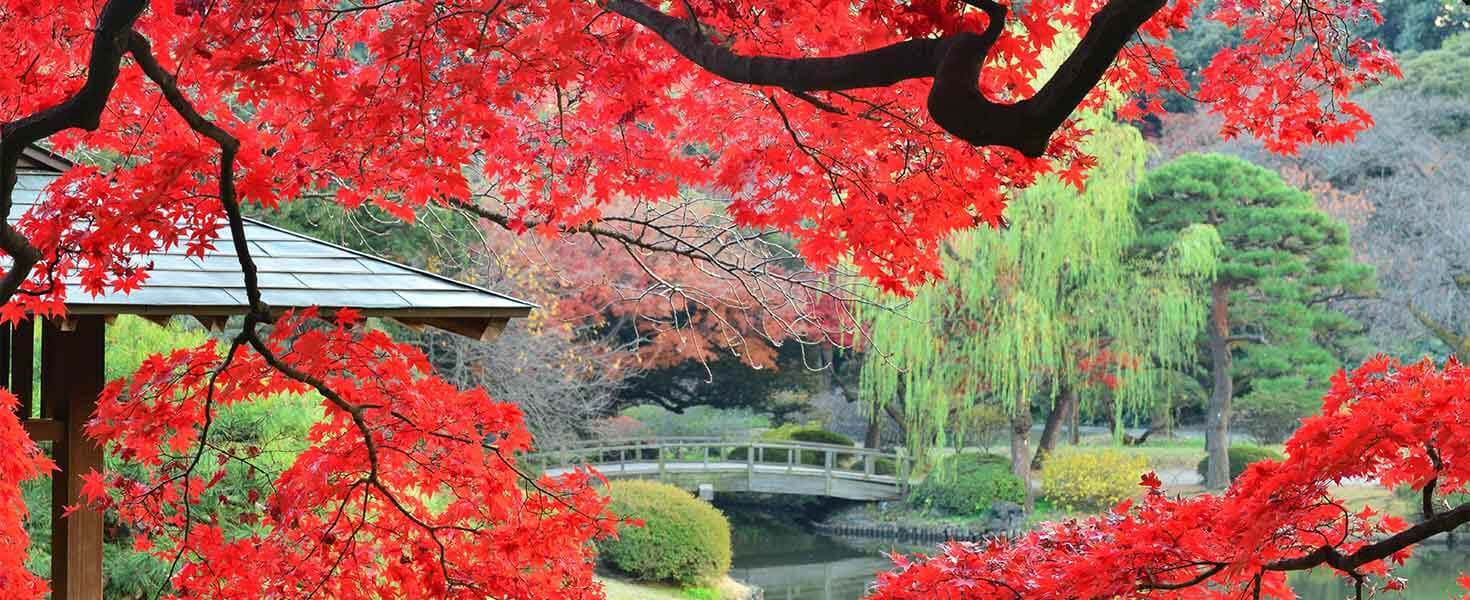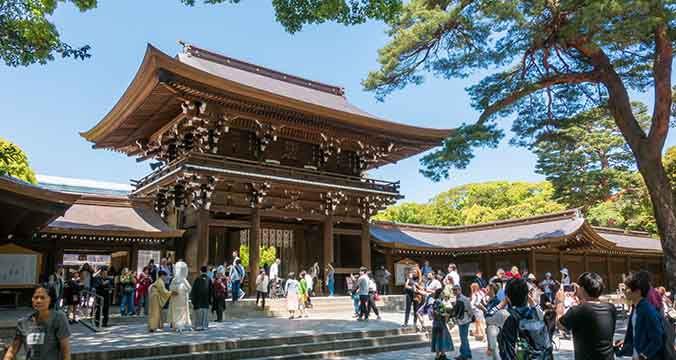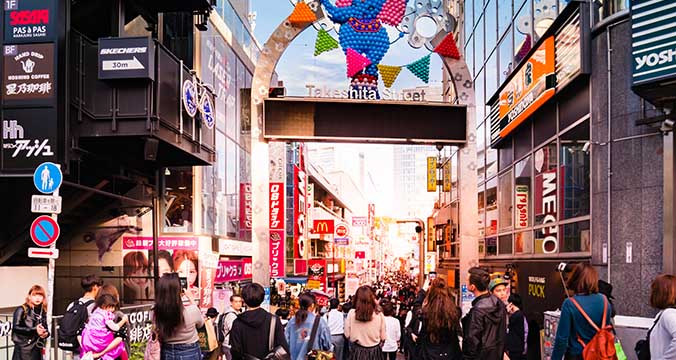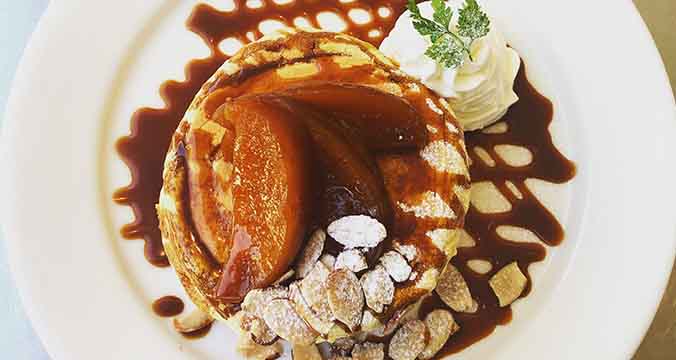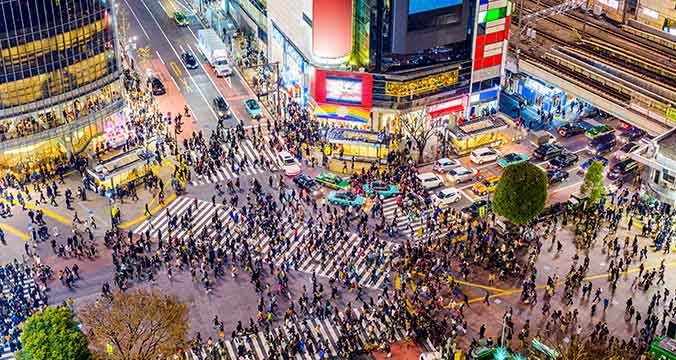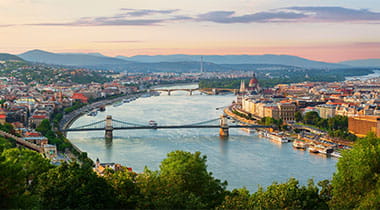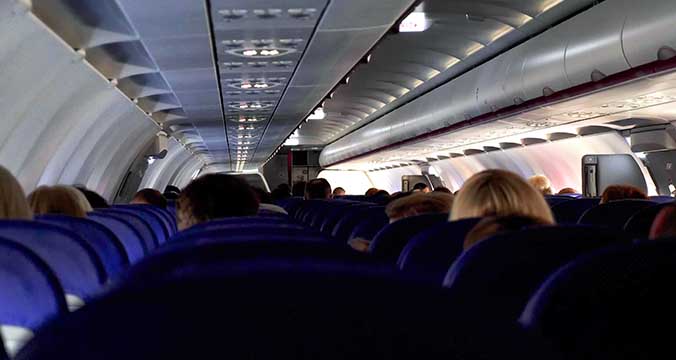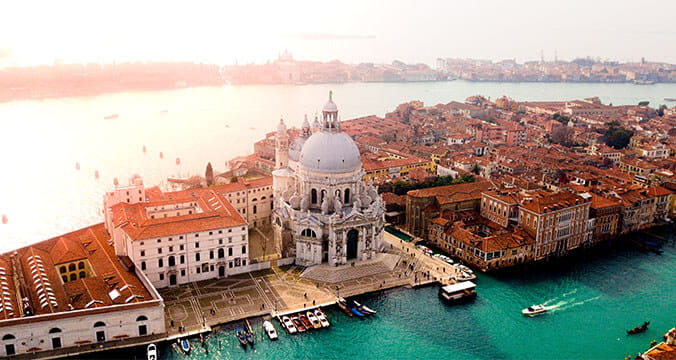Tokyo is one of the largest cities in the world, and if you only have 48 hours to explore, you’ll quickly feel overwhelmed in its narrow, winding streets and diverse neighborhoods. To best experience the highlights and amazing culture, a well-developed itinerary is a must.
DAY 1
EXPLORE SHINJUKU GYOEN
Start your day in a relaxing state of mind by exploring an authentic Japanese garden, which, luckily, is among the attractions that open earliest in the morning. In this massive green space removed from the hustle and bustle, you can relax and enjoy the quiet, traditional side of Japan along with a cup of tea.
VISIT THE MEIJI SHRINE
The Meiji Shrine is one of the most popular tourist destinations in the city, and at 170 acres, it’s easily one of the largest. Its nature trails through the forest make a nice escape from the busy streets of Shibuya. Take a moment to appreciate the hand-painted sake barrels, all of which were donated by brewers from around the country as an offering to the shrine’s deities. Be sure to wash your hands at the purification fountain at the entrance to the shrine (instructions hang from the ceiling) and deposit a small offering, or saisen, into the slotted offering box.
STROLL TAKESHITA STREET
Located near the Meiji Shrine in Harajuku, Takeshita Street is a pedestrian shopping area lined with boutiques, cafes, and restaurants. While many major chains are located here, you’ll find some interesting small shops with a wide array of wares. The narrow side streets are worth exploring, too. Crowds move slowly, but this gives you the opportunity to get some great photos. If you have time, visit Owl Village, where you can have tea, juice, or Japanese beer and get up close and personal with a variety of owls, including barn, great horn, and white-faced scops owls. There are several great ramen and crepe restaurants in the area, too.
RELAX AT THE TŌGŌ SHRINE
Just off of Takeshita Street, you can explore another shrine, this one to a noted navy admiral The Marquis Tōgō Heihachirō. Much smaller and more intimate than the Meiji Shrine, the architecture and natural surroundings are stunning. The shrine’s grounds transition the shrine’s green space—complete with a large koi pond—the perfect place for a relaxing afternoon breather.
REFUEL AT REISSUE
Between your potential jetlag and the adventures you’ve had so far, it may be time for you to caffeinate. Not only can you refuel with a latte at Reissue café, but you’ll also receive a unique art experience. Simply show your server a photo on your phone, and the café’s talented artists will convert that picture into latte art.
DINE IN SHINJUKU OMOIDE YOKOCHO
If you’re looking to sample authentic Japanese cuisine at reasonable prices, look no further than Shinjuku Omoide Yokocho, or the Shinjuku West Gate area. Here you’ll find cuisine ranging from yakitori (grilled skewered chicken) to yakiniku (grilled beef), soba (Japanese buckwheat noodles) to sushi, and a variety of ramen and casual dining options. This area is steeped in history, too; much of it was destroyed by fire shortly after World War II. The tightly packed area has been on a decades-long road to renewal and is definitely worth a visit.
KARAOKE IN GOLDEN GAI
Round out your first day in Tokyo exploring the nightlife in Golden Gai, a trendy neighborhood in Shinjuku. There’s no better way to mingle with the locals than by exploring the intimate bars and pubs, all of which have their own unique theme and décor. Plenty of authentic karaoke bars are in the area, too, so make sure your singing voice is ready.
DAY 2
TRY JAPANESE PANCAKES
Not to be confused with traditional American pancakes, Japanese pancakes are fluffy delicacies about two inches thick. Visit cash-only Rainbow Pancake in Harajuku for these delicious delights. The pancake flavors at Rainbow include orange chocolate, macadamia nut, and caramel apple. Pair with a cup of coffee and a fried egg, and you’ll be energized for the rest of the morning.
VISIT THE TSUKIJI FISH MARKET
You won’t want to miss this Tokyo institution where local fishermen haul in their fresh catches and sell them to local restaurants at an unimaginable speed. In order to see the fish auction, you’ll need to get here as early as 1 a.m. If the early (or late) hour doesn’t appeal, you can visit mid-morning to see the fish and vendors, since the activity doesn’t die down until about 2pm.
EXPERIENCE REAL-LIFE MARIO KART
If you’ve ever dreamed of an opportunity to experience a real-life version of Mario Kart, good news: you can in Tokyo. MariCAR in the Shibuya neighborhood allows you to don your favorite Mario Kart character’s costume, hop on a go-kart and take a one-hour tour of Tokyo while driving through city streets at up to 40 miles per hour. Bring your smartphone or consider renting a GoPro so you can get photos or video of Shibuya Crossing from a street-level perspective.
OBSERVE SHIBUYA CROSSING
One of the busiest crosswalks in the world, this is a sight you have to see to believe. Venture up to a second-floor window in one of the malls or skywalks to watch swarms of pedestrians instantly take over the busy intersection when the light changes. Afterward, explore the area’s shopping and dining options.
EAT AS MANY DESSERTS AS POSSIBLE
If you’ve ever wanted to try as many desserts as possible in 40 minutes, Café Ron Ron in the Harajuku district will be your dream come true. In a pretty, pastel dining room, a conveyor belt speeds past diners with delectable treats and savory side dishes to cleanse your palate. Locals try to stack as many finished plates as possible as a sign of pride, and it’s hard to compete with them. Stop by to make a reservation, then explore the narrow neighborhood streets full of independent shops while you wait to return for your turn at the belt.
GET A LAST VIEW OF THE CITY
Round out your visit by stopping by the Tokyo Metropolitan Government Building in Shinjuku for an unbeatable view of the city. While the observation deck at Tokyo Sky Tree may be higher, the view at the Tokyo Metropolitan Government Building is free and provides a 360-degree view. A visit at sunset is spectacular and nighttime views are stunning, too.
KNOW BEFORE YOU GO
GETTING AROUND
Tokyo has one of the most comprehensive rail systems in the world, with lines running from Haneda and Narita Airports to nearly everywhere in the city, making a rail pass a must on even the shortest visit. Consider selecting a hotel near a rail station for easy access to major tourist destinations, or use one of the express lines to get from the airport to the city center quickly. A variety of rail passes are available from daily to multi-day, so do your homework before selecting.
Baggage assistance is available, and the coach has Wi-Fi to keep you connected. Plus, you can relax with the added benefit of instructions and stop information in English. The bus, however, may not be the fastest way to get around, as you have the added variable of traffic.
Taxis are a fast and convenient way to get between destinations since traffic is for the most part, pretty minimal, and they can sometimes be easier than navigating crowds or trying to get your bearings in unfamiliar territory. It’s generally easy to find a taxi, and the drivers are pleasant. To expedite your ride, have the address ready for the taxi driver in Japanese—and don’t expect the address to be formatted in the standard American manner.
SPENDING MONEY
First, breathe a sigh of relief: tipping is frowned upon in Japan and is even considered offensive. The price you see is what you’ll pay before potential taxes, meaning your wallet won’t take an additional hit. While major credit cards are accepted at name-brand retailers, most restaurants and smaller shops are cash only, so bring plenty of Japanese yen with you, and choose the ATMs with the lowest fees if you need additional currency. When selecting which credit card you’ll use while in Japan, determine which have no or low foreign transaction fees.








